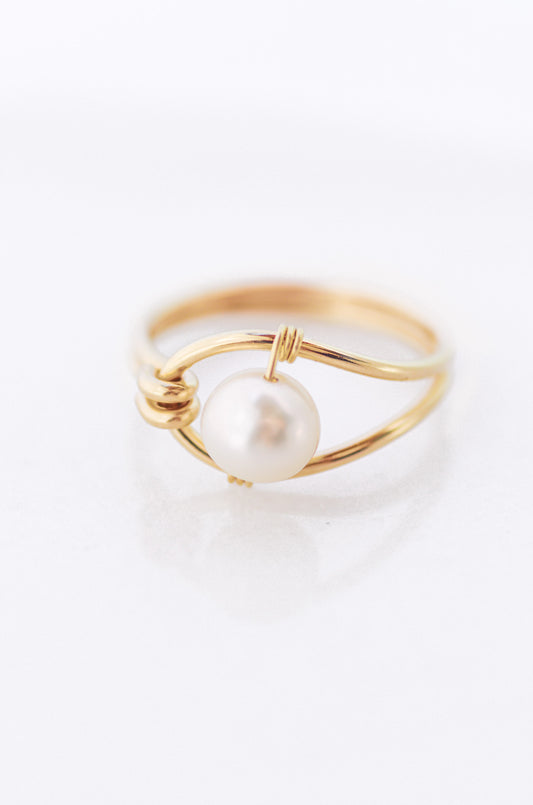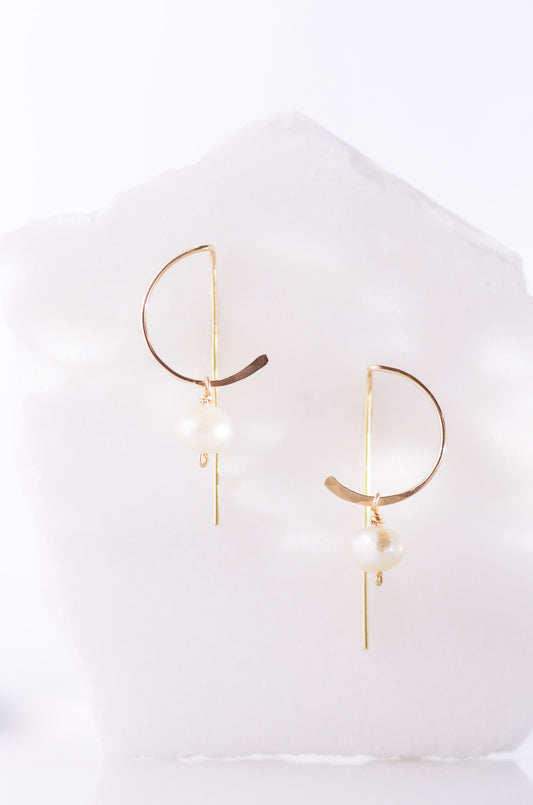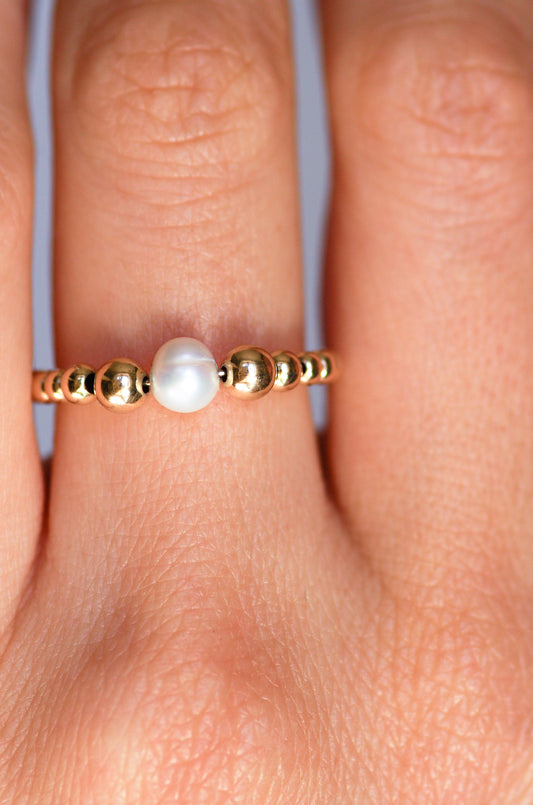
5 Signs Your Jewelry Is Truly Handmade
Teilen
Handmade jewelry is more than just an accessory - it reflects craftsmanship, care, and individuality. But how can you tell if a piece is genuinely handmade? Here are five key indicators to look for:
- Small imperfections and variations: Subtle differences in texture or shape show the human touch behind the piece.
- Artisan marks and stamps: Look for hallmarks indicating metal purity, origin (e.g., "925" for sterling silver), and maker's registration.
- Material quality and source: Handmade jewelry often uses high-quality, responsibly sourced materials like recycled metals and vintage gemstones.
- Construction methods: Techniques like hand-forging, soldering, and engraving create details machines can't replicate.
- Personal service and custom options: Handmade jewelry often includes personalized touches, such as custom engravings or unique designs.
These signs not only highlight the craftsmanship but also ensure you're investing in something meaningful and ethically made. Each piece tells a story of its creation, making it special and enduring.
1. Look for Small Imperfections and Variations
One of the clearest indicators of authentic handmade jewellery lies in its tiny imperfections. These aren't mistakes - they're the hallmark of human artistry. When you take a closer look, you might notice slight asymmetries, gentle curves that aren't perfectly identical, or subtle variations in texture. These details are the fingerprints of the artisan's hands.
Unlike jewellery churned out by machines, which achieves flawless uniformity through automation, handmade pieces embrace these organic differences. Every hammer strike, wire twist, or stone setting reflects the maker's personal style. These unique characteristics are what make each piece stand out as a true work of craftsmanship.
Small Imperfections Reflect True Craftsmanship
To identify these signs of authenticity, you’ll need to go beyond a surface glance. Afshin Shaddaie, co-founder of Estate Diamond Jewelry, offers this advice:
"I always tell clients, the first step to understanding your piece is to turn it over and look carefully - it's like a fingerprint."
Examine the jewellery under good lighting and from multiple angles, especially focusing on the back, edges, and clasps. Look for tool marks, tiny irregularities, or evidence of traditional techniques like reticulation (a process that creates organic textures through controlled melting), hand-applied patinas, or acid etching. These details tell the story of time, skill, and care - things machines simply can’t replicate.
How Rays & Riches Celebrates Individual Character
At Rays & Riches, we embrace these natural variations as a cornerstone of our commitment to ethical, Italian craftsmanship. Our artisans in Italy understand that true artistry lies in the character brought to life by human hands. From the subtle textures of recycled metals to the unique inclusions in repurposed vintage gemstones, every piece we create tells a story of individuality and care. These natural quirks aren’t just features - they’re what make each piece one of a kind.
2. Check for Artisan Marks and Stamps
Artisan marks are a key indicator of a piece's authenticity and craftsmanship. Genuine handmade jewellery often includes stamps, hallmarks, or other artisan marks that highlight its origin, metal purity, and the creator behind it. In contrast, mass-produced items typically lack these unique identifiers.
When inspecting a piece, pay attention to multiple marks that work together to tell its story. Look for purity stamps like '925' for sterling silver, origin indicators such as 'Italy' or 'Italia,' and maker's marks that pinpoint the artisan or workshop. Authentic stamps should appear crisp, uniform, and professionally applied. Be cautious of faint, uneven, or poorly executed marks, as these may signal inauthenticity. Italian jewellery, in particular, carries specific hallmarks that can further verify its origin and quality.
Italian Stamps and What They Mean
Italian jewellery hallmarks are rich with meaning. For example, the '925' stamp signifies that the piece is made of 92.5% pure silver, with the remaining 7.5% usually being copper to enhance durability [2]. Post-1968, Italian hallmarks began incorporating a five-pointed star on the left, a maker's registration number in the center, and two regional ID letters on the right [3]. A well-known example is UnoAerre’s mark, 'Star 1 AR,' which denotes registration in Arezzo.
Historically, Italian artisans also used elongated hexagonal stamps featuring the registration number and regional letters. Today, silversmiths use a hallmark that combines a star, a numerical identifier, and a two-letter provincial code. Italy’s participation in the Convention on the Control and Marking of Articles of Precious Metals has further strengthened these hallmarking standards, ensuring strict authentication rules that serve as a benchmark for quality. Rays & Riches adheres to these standards, reflecting their commitment to genuine craftsmanship.
How Rays & Riches Shows Clear Information
At Rays & Riches, transparency is central to building trust with our customers. Every piece in our collection carries authentic Italian hallmarks, clearly indicating the metal purity, our workshop's registration details, and the regional codes that trace back to our skilled Italian artisans. For instance, our sterling silver pieces prominently feature the '925' stamp alongside 'Italia,' confirming their origin, while our gold-layered jewellery displays markings that specify both the base metals and gold content.
Each stamp is applied with precision, ensuring it not only authenticates the piece but also complements its design. When you choose a Rays & Riches piece, you can examine these marks with confidence, knowing they reflect genuine Italian artistry and our dedication to ethical, sustainable jewellery making.
Our customer service team is always available to help you interpret these hallmarks, offering detailed information about your jewellery’s origin and quality.
3. Examine Material Quality and Source
Handmade jewellery stands out for its use of high-quality, ethically sourced materials that reflect both craftsmanship and care for the environment. On the other hand, mass-produced pieces often lack transparency about where their components come from, leaving questions about their origins unanswered.
When assessing a piece of jewellery, pay attention to details about material sourcing. Ethical artisans are upfront about the origins and traceability of their materials. Check the designer’s website for certifications that verify the sourcing process. This level of transparency and dedication to quality often extends to the materials used, as highlighted below.
Recycled Metals: A Responsible Choice
Many artisans rely on recycled gold and silver to minimise environmental impact while maintaining exceptional quality. Using recycled metals requires less energy compared to mining new materials, making it a more sustainable option[6]. Certifications like Fairmined for gold and silver can confirm that these metals are ethically sourced[1]. For instance, brands like Brilliant Earth and SOKO incorporate recycled silver into their designs, prioritising sustainability[1].
Recycling just one tonne of gold prevents the disturbance of hundreds of tonnes of earth[6]. At Rays & Riches, all our Italian-crafted pieces are made exclusively with recycled metals. We use an advanced gold layering process that’s 100 times thicker than traditional plating. By combining recycled gold with heat and pressure - rather than chemicals - we produce durable jewellery that’s safe for sensitive skin while supporting eco-conscious practices.
Repurposed Gemstones and Pearls
Repurposing gemstones is another way artisans demonstrate their commitment to sustainability. Vintage gemstones and pearls bring a rich history and natural imperfections that set them apart from synthetic options. These natural stones often feature unique inclusions and subtle colour variations, giving each piece a character all its own[4].
Using repurposed gemstones also reduces the demand for new mining operations, benefiting both the environment and local communities[5]. At Rays & Riches, we specialise in breathing new life into vintage gemstones and pearls. By carefully selecting stones from older jewellery, we craft fresh designs that honour their history. This thoughtful approach avoids the environmental and social costs of traditional mining while ensuring each piece reflects genuine Italian craftsmanship and a meaningful story.
sbb-itb-2024ddf
4. Notice the Construction Methods
The way jewellery is constructed often reveals its artisan roots. Handcrafting techniques, which require both skill and time, bring out details that machines simply cannot replicate. By examining elements like joints, connections, and surface finishes, you can uncover the story behind a piece's creation. These subtle details often set handmade jewellery apart from mass-produced alternatives.
Hand Construction vs Machine Methods
Hand-forging, soldering, and engraving are the cornerstones of traditional craftsmanship that define handmade jewellery. These techniques demand a level of care and expertise that goes beyond what machines can deliver. When you look closely at components like prongs, ear wires, or other small details, you’ll notice slight variations - perhaps in thickness or curvature - that reflect the human touch[8]. Machine-made jewellery, while precise and uniform, often lacks the charm and individuality found in handmade pieces. These subtle imperfections are what make each handmade item unique and personal.
Soldering in handmade jewellery often showcases the artisan's skill, with smooth, seamless joints where metals meet. There are no gaps or rough edges, which not only enhances the piece's appearance but also its durability compared to mass-produced items[7]. Look for features like wire-wrapped designs or intricate metalwork - details that can only be achieved by hand[8]. Techniques like hammering heated metal create textures that bear the unmistakable mark of the artisan's tools and vision.
At Rays & Riches, our Italian artisans continue to use traditional hand-forging methods that have been passed down through generations. Each piece is carefully hand-soldered to ensure it is not only beautiful but also built to last.
Nature-Based Design Patterns
Nature often serves as a rich source of inspiration for handmade jewellery, with artisans transforming organic shapes into wearable art. Sterling silver is a popular choice for these designs due to its versatility, durability, and affordability[9]. Through techniques like engraving, etching, and hammering, artisans replicate natural textures, bringing leaves, flowers, and other patterns to life[9].
The golden ratio and natural proportions frequently appear in handmade jewellery, creating designs that feel effortlessly harmonious. These mathematical relationships, often observed in nature, require both careful planning and exceptional skill to execute. Many artisans reinterpret traditional motifs, like floral patterns or tree of life designs, giving them a fresh, modern twist while staying true to their roots[9].
At Rays & Riches, we combine the beauty of nature with precise craftsmanship in our Italian-made designs. Our artisans study botanical and geological forms to capture their essence in jewellery. Each piece reflects the intricate beauty of the natural world, blending artistic vision with technical expertise. This approach not only connects the wearer to nature but also highlights the dedication and mastery behind every creation.
These construction methods are what make handmade jewellery truly special. They reflect not just the technical skill of the artisan but also their personal aesthetic and heritage. Each piece tells a story - of its creation, its inspiration, and the natural world it seeks to celebrate.
5. Look for Personal Service and Custom Options
When it comes to handmade jewellery, the personal touch makes all the difference. Just as small imperfections and unique details reveal the artistry behind each piece, personalised service highlights the craftsmanship that goes into creating handmade jewellery. Artisans who work by hand have the freedom to adapt designs, add meaningful details, and collaborate directly with customers to craft something truly one-of-a-kind. This level of customisation simply isn't possible with mass-produced jewellery.
Custom Work Reflects True Craftsmanship
Personalisation takes handmade jewellery to the next level, showcasing the artisan's skill and attention to detail. Techniques like hand stamping and engraving add a personal touch that only a skilled craftsperson can achieve, making each piece unique in a way that machines simply can't replicate [10]. These details not only enhance the jewellery but also highlight its human origin.
Whether it's resizing a ring, adjusting a chain, or incorporating birthstones, these services require the care and expertise of a skilled artisan. Custom engravings, for example, transform jewellery into more than just an accessory - they become deeply personal keepsakes. This hands-on approach ensures that every piece tells a story, reflecting the wearer's individuality and the artisan's dedication.
Rays & Riches' Personalised Service
At Rays & Riches, we pride ourselves on delivering the kind of personalised service that defines handmade jewellery. Each piece we create is designed to resonate with the wearer's unique style and mark life's special moments [11]. Our Italian artisans work closely with customers, turning their visions into reality.
Building strong relationships with our customers is at the heart of what we do. By engaging directly with them, we create a connection that goes beyond the transaction, fostering trust and loyalty [13]. Our team listens carefully to individual preferences, ensuring that every interaction feels personal and meaningful.
We also take pride in offering a customisation process that reflects our commitment to sustainable and thoughtful craftsmanship. Whether it’s tweaking our nature-inspired designs or incorporating repurposed gemstones with sentimental value, our artisans have the expertise to bring these requests to life.
"Speaking directly to your current and target customers helps you develop a strong rapport that leads to continued sales. This approach not only enriches the customer experience - it nurtures loyalty and encourages repeat visits." - Nick Gurney, Jewel360 [13]
From the first consultation to the final delivery, our transparent communication keeps customers informed every step of the way. We provide updates throughout the creation process, ensuring that the final piece matches their expectations perfectly [14]. This level of care and attention creates emotional connections that last long after the jewellery is delivered [14].
Offering customisation is what sets handmade jewellery apart from mass-market alternatives [12]. At Rays & Riches, we celebrate the bond between artisan, jewellery, and wearer, creating timeless pieces that hold personal meaning for years to come.
Conclusion: The Benefits of Choosing Handmade Jewelry
Understanding the key signs of handmade jewelry - like small imperfections, artisan marks, premium materials, skilled craftsmanship, and personalized service - can guide you in making thoughtful choices when investing in these unique creations. These features reflect the essence of true artistry.
Handmade jewelry stands out for its durability, emotional value, and lasting worth, thanks to the enduring qualities of precious metals like gold and platinum, alongside certified natural diamonds and rare gemstones [15]. As Bomi Jewelers aptly puts it:
"True luxury is built for longevity. It's not just about shine - it's about structure, materials, and expert craftsmanship." [15]
Opting for handmade pieces also supports artisan communities in a tangible way. Brands such as Rays & Riches contribute directly to Italian artisans, helping to preserve time-honored techniques passed down through generations [18]. This support often aligns with eco-friendly practices, creating a ripple effect of positive change.
Many handmade jewelry brands prioritize sustainability by ethically sourcing materials and using recycled metals to minimize environmental harm [19]. For instance, Rays & Riches incorporates repurposed vintage pearls and gemstones, sidestepping the environmental challenges of traditional mining while crafting pieces imbued with history and distinct character.
Italy’s jewelry market continues to shine, with exports reaching €12.4 billion in 2023 and showing steady growth [19]. This success highlights the rising demand for carefully crafted alternatives to mass-produced, fast-fashion items [17].
Beyond the craftsmanship and ethical values, handmade jewelry offers a deeply personal connection. Each piece transcends its role as a mere accessory, becoming a celebration of artistry, sustainability, and human ingenuity. As notajewelry beautifully states:
"Handcrafted artisan jewelry is more than just a piece of jewelry; it is a work of art. Artisans pour their creativity and passion into each piece, resulting in jewelry that is not only beautiful but also meaningful." [16]
FAQs
How can I check if the artisan marks on my jewelry are authentic?
To verify artisan marks on your jewelry, begin by comparing them against reliable hallmark guides or reference materials tailored to Italian or international standards. Genuine marks are usually sharp, well-defined, and match established maker's symbols or signatures. If you're uncertain, seeking advice from a professional jeweller or appraiser can provide clarity.
Take a close look at the engraving quality as well - authentic marks typically reflect consistent and skilled craftsmanship. For extra assurance, you might use specialised tools or resources to double-check the marks and confirm they align with recognised artisan details.
What are the environmental advantages of choosing jewelry made from recycled metals and repurposed gemstones?
Choosing jewelry made from recycled metals and repurposed gemstones offers a meaningful way to reduce environmental harm. It cuts down the need for mining, which is notorious for destroying habitats, causing pollution, and consuming vast amounts of energy. Extracting resources like gold, silver, and platinum is a process that takes a heavy toll on ecosystems.
By reusing materials - whether from old jewelry or electronic waste - we can significantly reduce waste and shrink the industry's carbon footprint. This approach not only encourages ethical practices but also supports a more eco-friendly jewelry market. It’s a step toward protecting the planet while still celebrating stunning, expertly crafted designs.
How does the process of customising handmade jewellery work, and what options can I choose from?
The journey of creating handmade jewellery tailored to your taste begins with a consultation. During this step, you’ll share your ideas, preferences, and inspirations with the artisan. This might include discussing the overall style, preferred materials, and any unique details you’d like to incorporate. To bring your vision to life, the jeweller may create sketches or digital mock-ups, giving you a clear picture of the final design.
Here are some popular customisation options:
- Material selection: Opt for precious metals like gold (available in options such as 18k) or silver, depending on your preference.
- Gemstones: Choose the type, colour, and cut of gemstones - whether it’s diamonds, sapphires, emeralds, or something more unconventional.
- Engravings: Add a personal touch with meaningful dates, names, or symbols.
Throughout the process, there’s room for revisions to ensure everything aligns with your vision before production begins. The end result? A truly unique piece that embodies your style and sentiment, meticulously crafted by skilled hands.







